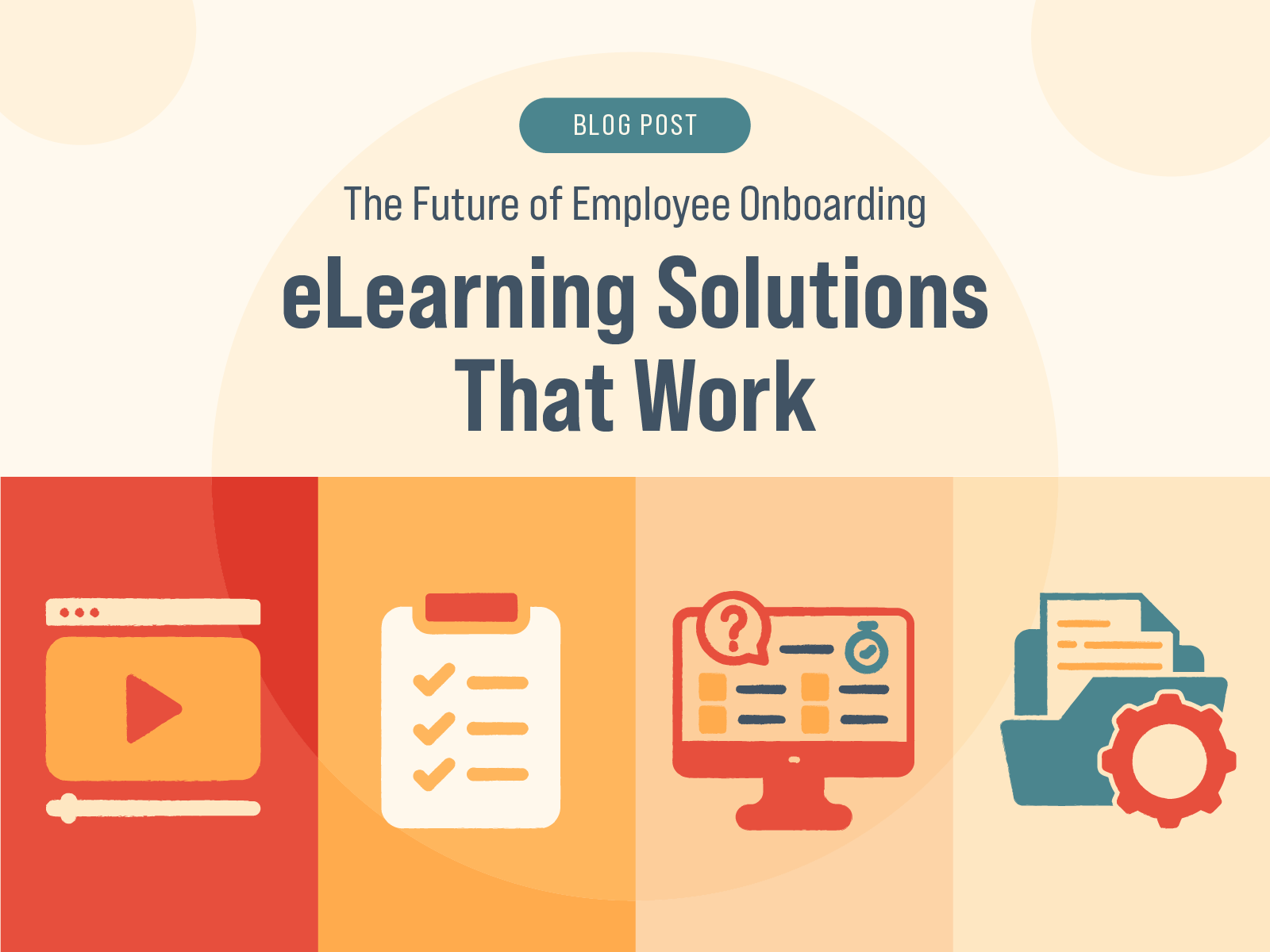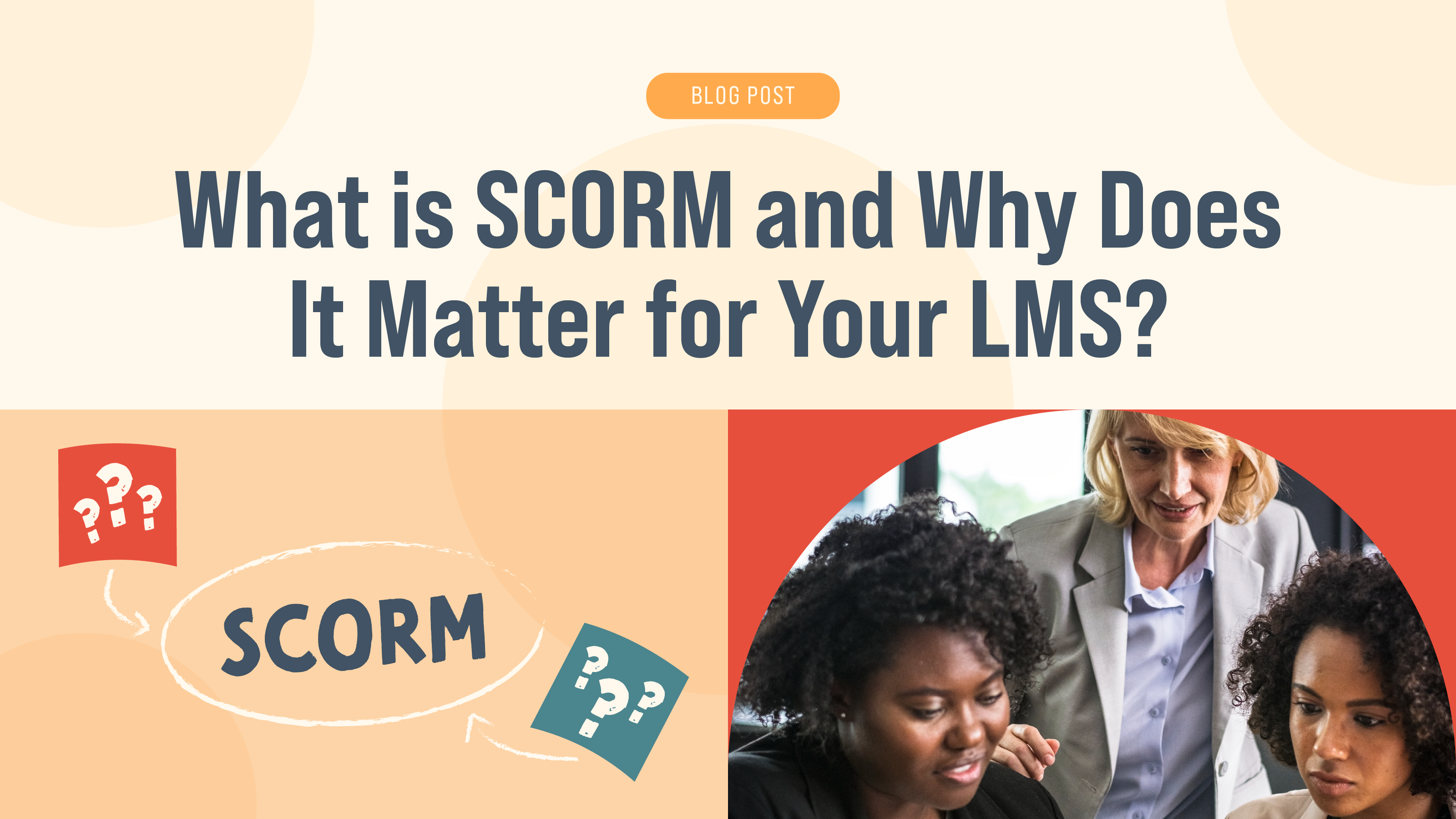The Process of eLearning Part 3: The Design Phase
Welcome to Part 3 of our series “The Process of eLearning”!
The Design Phase is where we plan the structure and content of the eLearning course. This phase is crucial as it involves creating a blueprint that guides the development of the course, ensuring that the learning objectives are met and that the content is engaging and effective.
Key Steps in the Design Phase
Storyboarding and Scripting
Storyboarding and scripting are essential for visualizing the course and planning its interactive elements.
- Creating Storyboards: We develop detailed storyboards that map out the course structure, including the sequence of content, interactions, and assessments. Because these storyboards will inform our next step, Development, it’s important that we get the content of the course(s) finalized in this stage. This helps us visualize the learner's journey and ensure a coherent flow (Skillshub.com) (SHIFT | Home).
- Writing Scripts: We craft scripts for audio narrations, video content, and interactive elements. Our scripts are designed to be clear, engaging, and aligned with the learning objectives, ensuring a seamless learning experience (Articulate E-Learning Heroes Community).
Choosing the Right Format
Selecting the appropriate formats for delivering content is crucial for maximizing learner engagement and retention.
- Format Selection: We determine the best formats for delivering each part of the content, such as videos, interactive modules, simulations, or quizzes. Our choices are based on the learning objectives, content complexity, and learner preferences (SHIFT | Home) (Gerta).
- Multimedia Integration: We start deciding on how to incorporate multimedia elements, such as graphics, animations, and audio, to enhance the learning experience. These elements make the content more engaging and help reinforce key concepts (Skillshub.com) (eLearning Learning).
Designing Assessments
Assessments are integral to measuring learner progress and ensuring that the learning objectives are met.
- Creating Assessments: We design various types of assessments, such as quizzes, simulations, and practical tasks, to evaluate learners' understanding and application of the content. Our assessments are aligned with the learning objectives and provide meaningful feedback to learners (Articulate E-Learning Heroes Community) (eLearning Learning).
- Formative and Summative Evaluation: We incorporate both formative assessments (ongoing checks for understanding) and summative assessments (final evaluations) to gauge learner progress throughout the course (Gerta).
Why the Design Phase Matters
The Design Phase is critical because it sets the stage for the development of the course. A well-designed course is not only more engaging and effective but also ensures that the learning objectives are met. By carefully planning the structure, content, and assessments, we create a solid foundation for a successful eLearning course.
Allegro Media Design’s Approach
At Allegro Media Design, we take a meticulous approach to the Design Phase. Our team of instructional designers collaborates closely with stakeholders to ensure that every element of the course is carefully planned and aligned with the learning objectives. We leverage our expertise in multimedia production and instructional design to create engaging, effective, and visually appealing eLearning experiences.
Ready to Design Your eLearning Course?
If you're ready to design an impactful eLearning course, Allegro Media Design is here to help. Contact us today to learn more about our comprehensive design services and how we can assist you in creating a successful eLearning program.
Check out the other blogs in this series:
• Part 1: The eLearning Process
• Part 4: The Development Phase
• Part 5: The Implementation and Evaluation Phase
More Articles


Gamification in eLearning: Why It Works and How to Implement It

The Future of Employee Onboarding: eLearning Solutions That Work

What is SCORM and What Does it Matter

Accessibility in eLearning: Why It’s Essential and How to Achieve It

Microlearning: Bite-Sized Training for Big Results

Soft Skills Training Through eLearning: Building Better Leaders

How to Write Learning Objectives for eLearning Courses

When to Outsource Your eLearning Development (and How to Choose the Right Partner)

Employee Engagement in 2025: How eLearning Can Help

Training for a Multigenerational Workforce: Meeting Everyone’s Needs

The Future of eLearning: 4 Trends Shaping the Industry

How To Find the Right eLearning Developer

What Makes eLearning Effective?

Transform Your eLearning with the Magic of Animation

How to Use Audio to Enhance eLearning

Boost Learning Efficiency with Microlearning

Give Your Dated eLearning a Fresh Facelift

The Process of eLearning Part 5: The Implementation Phase

The Process of eLearning Part 4: The Development Phase

The Process of eLearning Part 2: The Analysis Phase

The Process of eLearning Part 1

Empower Your Workforce with Self-Paced Training

Elevate Your Training with Exceptional Visual Design

Taking the Confusion Out of SCORM

Embrace Efficiency: The Power of Outsourcing Your eLearning Production

Mastering eLearning: Elevating Corporate Training Through Scenario-Based Learning

Converting ILT to vILT: Embrace the Virtual Shift

Spice Up Your Boring Corporate Training With Animated Videos Copy

From Concept to Clicks: The Crucial Role of eLearning Developers

Lost in Translation: Mastering Multilingual eLearning

Training Crossroads: ILT or eLearning – What's Your Strategy?

How to Transform Boring Compliance Training

Last-Minute Crunch? Allegro Media Delivers Rapid eLearning Solutions Just-In-Time!

The Art of Chunking (or How to Eat a Whale)

Zen & The Art of eLearning Maintenance: Finding Harmony with Allegro Media Design

How to leverage ChatGPT for eLearning Applications

What Should I Look for When Hiring an eLearning Vendor?

Unveiling the Future of eLearning: Trends to Watch in 2024

Subject Matter Experts: Be Proud! Allegro loves you just how you are!

What in the World is an LMS?

Enhancing eLearning Engagement: The Power of Scenario-Based Interaction with Stylized 3D Motion Images

Enhancing eLearning with DALL-e: Adding Visual Reinforcement for Engaging Corporate Training

Choosing the Right Authoring Tool for Your eLearning Course

High Quality Audio is ESSENTIAL in Modern eLearning

What in the World is SCORM?

A Complete Guide to Leadership Training and Development

Benefits of Customer Service eLearning Training

14 Tips To Effectively Use Audio for eLearning Courses

10 Instructional Design Tips for Effective eLearning

Why You Should Use eLearning For Product Training

Benefits of Voice Overs for Your Business

How to Create Great eLearning Content: 9 Tips

Video Marketing for Business: 10 Benefits of Promotional Videos

Gamification in the Workplace: Why and How to Use It

5 Best Practices for Training Remote Employees

How to Avoid eLearning Burnout and Fatigue

What Is Customer eLearning Training and Why Do You Need it?

8 eLearning Sales Training Best Practices: Tips & Use Cases

How to Effectively Use Videos in eLearning

Best Practices for Remote Employees Onboarding with eLearning

Why You Should Invest in Corporate eLearning?

How Can eLearning Reduce Employee Burnout?

How to Motivate Employees to Participate in eLearning Training: 9 Tips

eLearning Trends and Predictions: 2022 Forecast

7 Reasons to Outsource Your eLearning Course Development
%20to%20Virtual%20Instructor-Led%20Training%20(VILT).jpg)
How to Convert Instructor-Led Training (ILT) to Virtual Instructor-Led Training (VILT)

12 Best Tips on How to Improve Employee Training with Gamification in 2021-2022

What Is Compliance Training and Why Is It Important for Your Business?
%20vs.%20eLearning.jpg)
Instructor-Led Training (ILT) vs. eLearning: Which Should I Choose?

The Difference Between An Instructional Designer And An eLearning Developer
















